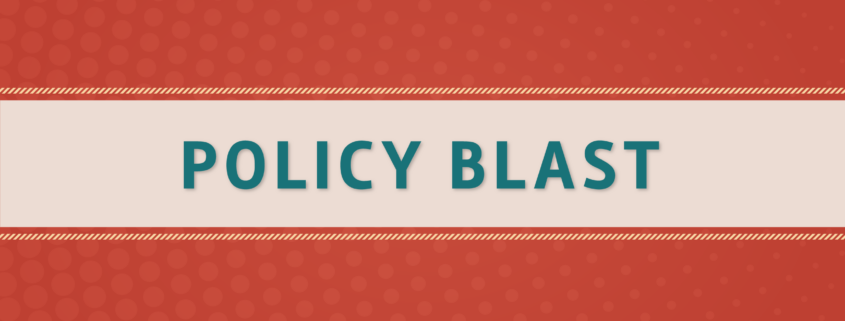FY 2022 Update on IHS Special Diabetes Program for Indians: SDPI Funding Levels Reduced and 1-Year Extension of Current Grant Cycle
On November 15, 2021, the Indian Health Service (IHS) sent out a Dear Tribal Leader and Urban Indian Organization Leader letter (DULL) that discussed the Special Diabetes Program for Indians (SDPI) for fiscal year (FY) 2021 and the upcoming changes for the program in FY 2022. As a grant program inclusive of all three components of the Indian Health Service/Tribal Health Program/Urban Indian Organization (I/T/U) system, SDPI has been a resounding and demonstrable success in reducing diabetes and diabetes-related illnesses in Indian Country.
Background
In 2004, Congress established the SDPI Demonstration Projects to translate research-based interventions for diabetes prevention and cardiovascular disease (CVD) risk reduction into AI/AN community-based programs and health care settings. In total, The SDPI Demonstration Projects successfully translated diabetes science and reduced the risk of diabetes in high risk individuals, and reduced CVD risk factors in people with diabetes. In 2010, the SDPI Demonstration Projects transitioned into the SDPI Initiatives to continue their prevention work and begin disseminating the strategies and lessons learned to other I/T/U health programs.
Since the inception of SDPI, it has achieved real, demonstrable success, with a 50% reduction in diabetic eye disease rates,drops in diabetic kidney failure, and a 54% decline in End Stage Renal Disease.Given the high rates of diabetes and diabetes-related illnesses AI/ANs face, it is imperative that SDPI is administered in a way that continues to reduce these rates – and in a manner that is inclusive of UIOs. AI/ANs have the highest diabetes prevalence rates of all racial and ethnic groups in the United States, with AI/AN adults almost three times more likely than non-Hispanic white adults to be diagnosed with diabetes.According to 2018 data from the Centers for Disease Control and Prevention, AI/ANs were 2.3 times more likely than non-Hispanic whites to die from diabetes and twice as likely to be diagnosed with end stage renal disease than non-Hispanic whites. SDPI is therefore a critical program to address the disparate high rates of diabetes among AI/ANs.
SDPI has directly enabled UIOs to provide critical services to their AI/AN patients, in turn significantly reducing the incidence of diabetes and diabetes-related illnesses among urban Indian communities. funding. Facilities use these funds to offer a wide range of diabetes treatment and prevention services, including but not limited to exercise programs and physical activity, nutrition services, community gardens, culinary education, physical education, health and wellness fairs, culturally-relevant nutrition assistance, food sovereignty education, group exercise activities, green spaces, and youth and elder-focused activities. To continue the path of success in reducing the rate of diabetes in Indian Country, IHS must continue to provide this essential funding to UIOs.
NCUIH has long advocated for an increase in SDPI funds. NCUIH
FY 2022 Changes and Updates
Starting in FY 2022, SDPI funding will reduce from $150 million to $147 million each year. This reduction is due to a mandatory sequester which reflects a required 2% reduction continuing through 2023 under current law. While the SDPI grant cycle was due to end on December 31, 2021, IHS learned of the time intensive requirements and IHS has determined that FY 2022 will constitute a 1-year extension of the current grant cycle, extending it to a seventh year. IHS believes this extension will allow more time to work on the notice of funding opportunity and decrease some of the administrative burden for SDPI grantees.
Tribal Leaders Diabetes Committee Meeting Held on December 8, 2021
On December 8, 2021, IHS held a Tribal Leader Diabetes Committee (TLDC) meeting to discuss the current SDPI Funding Distribution. This funding includes $130.2 million in Tribal and IHS grants. A portion of that total will go to 14 IHS grants as well as Technical Assistance services for 8 IHS areas. Urban Grants will receive $8.5 million in funding with $100k going to Technical Assistance. The SDPI Funding Formula is used to determine how much of the $130.2 million goes to each Area for Tribal/IHS grants. This formula includes information about diabetes prevalence, user population (AI/ANs who have used IHS services at least once in the past 3 years), and the tribal size adjustment. The meeting also announced a new Notice of Funding Opportunity (NOFO) which allows for new and open competition. Urban Indian health programs operated by UIOs are eligible for this NOFO pursuant to a grant or contract with IHS.
The TLDC meeting also outlined a FY 2023 SDPI timeline and issues for consideration, including the potential risk for a decrease in annual SDPI grant amounts due to the open competition, how grantees can be held harmless under the current situation, whether there will be a change in the SDPI funding formula, and what the Tribal Consultation/Urban Confer process will look like moving forward.




Leave a Reply
Want to join the discussion?Feel free to contribute!